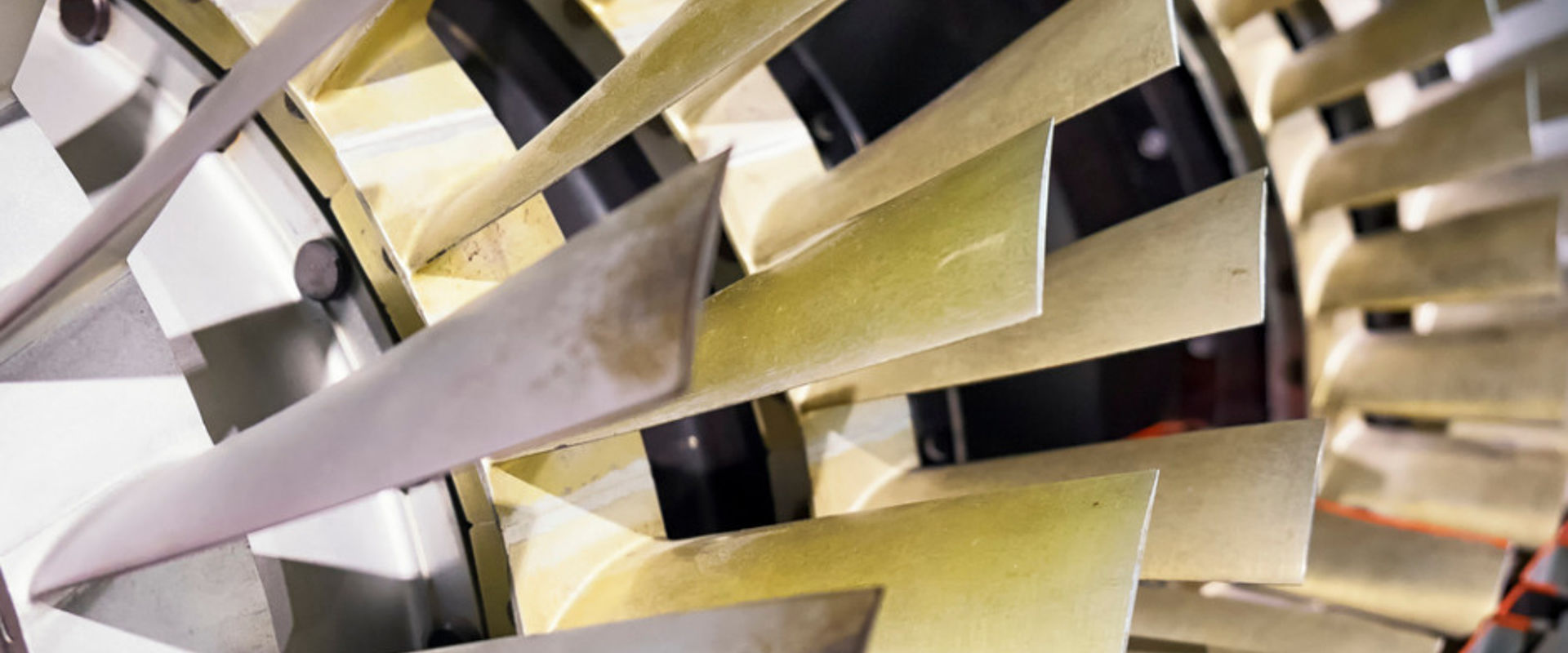
Coatings for gas turbines
Challenge
Gas fired power plants use burning gases to drive turbines and create electricity. The efficiency of converting the heat and speed of gas streams into turbine blade motion determines how much energy is produced per ton of gas burnt. Hot gas streams pick up particles and corrosion scales from interior surfaces of combustion chambers and transition ducts, which later collide with turbine blades causing erosion. This compromises operating efficiency and sometimes leads to expensive unscheduled emergency power plant shut downs.
To reduce heat loss from the gas stream to the turbine, manufacturers use ceramic thermal barrier coatings to protect turbine blades. Improving the performance of these coatings has a direct benefit for power plant operation – increased efficiency, reduced gas burn per megawatt produced and reduced carbonemissions as required in EU directives. But thermal barrier coatings, especially new low thermal conductivity ones, can be less erosion resistant than more traditional coatings.
Therefore, when new blade coatings are being developed, confidence in their erosion resistance to the millions of particles moving at speeds close to 300 metres per second at temperatures of up to 900 o C is required. Testing new barrier coatings using inservice conditions relies on being able to measure experimental parameters accurately.
Solution
The EMRP project, Metrology to enable high temperature erosion testing, investigated key parameters in erosion testing. They developed methods to determine particle shape and size using X-ray computed tomography and ways to accurately measure particle speeds in test rigs. This has generated a better understanding of the differences between test and real particles in gas streams and methods to relate these to the erosion caused.
One of the European centres with erosion test facilities, RSE, collaborated in the project, and is now applying project knowhow to better tailor testing to in-service conditions. Getting test conditions correct using fewer attempts reduces the number of wasted samples and speeds facility set-up, whilst improved measurement techniques provide greater assurance that testing closely matches in-service conditions.
Impact
Ansaldo Energia, manufactures gas turbines for the power industry and has supplied turbine installations worldwide that produce 33,400 MWh of electricity. Today, Ansaldo Energia is performing research to develop new turbine coatings to further increase overall turbine efficiency and in-service operating life. Ansaldo Energia is therefore very keen to gain the benefits that can come from testing performed at the improved RSE facility. As a result of project upgrades, Ansaldo Energia will have increased confidence that their new turbine coatings have been rigorously tested using the in-service conditions they specified.
As a result of this project, turbine manufacturers, such as Ansaldo Energia, can now have increased confidence that coatings will perform as expected in-service as a result of faster and more efficient material testing. Improvements to turbine blade erosion resistance will help gas power plants reduce unplanned downtime and improve efficiency, thereby reducing their CO2 emissions and helping with EU carbon emission reduction directive compliance.
- Category
- EMRP,
- Industry,
